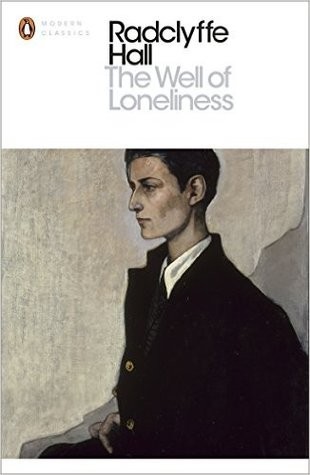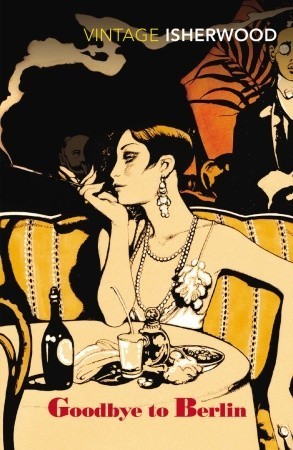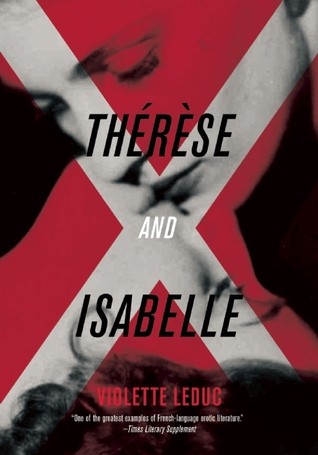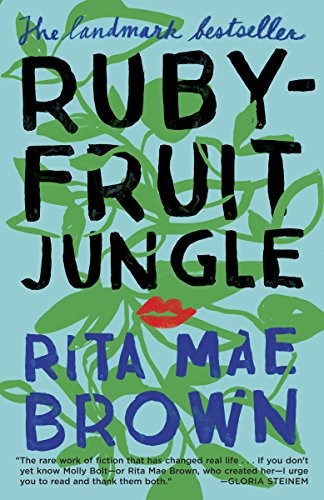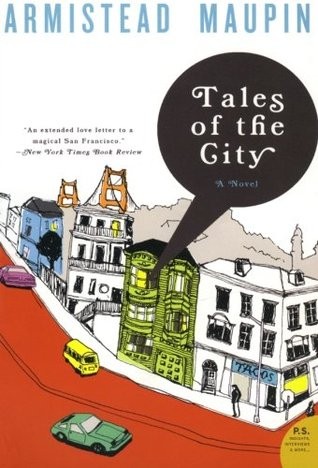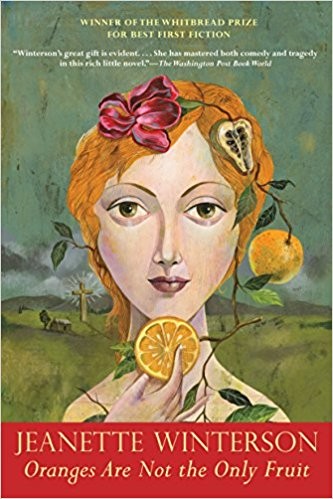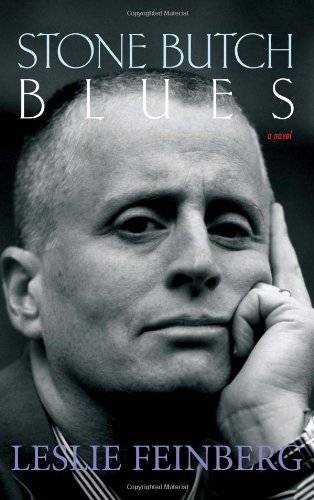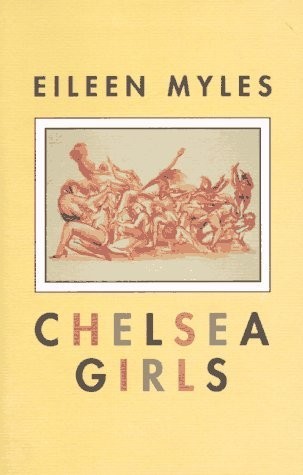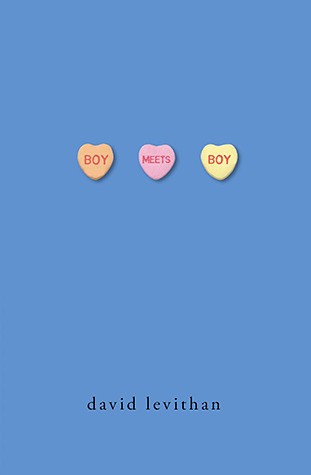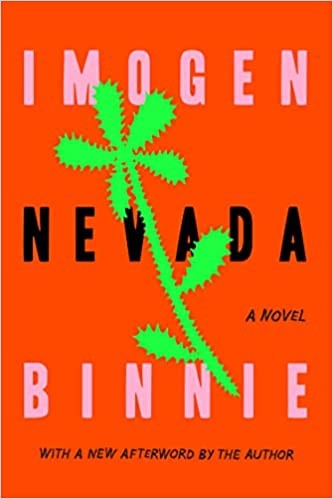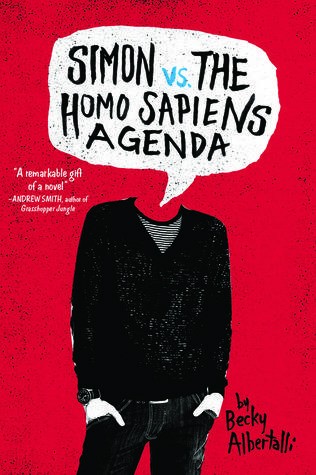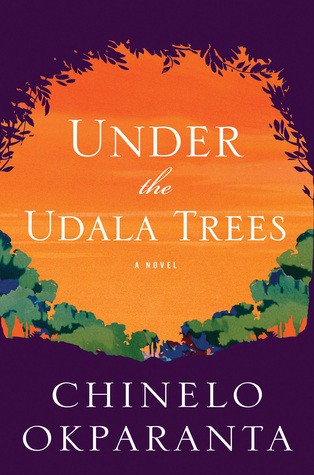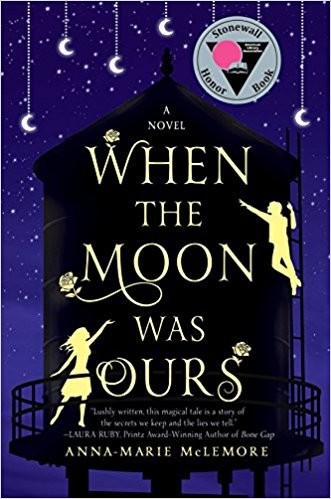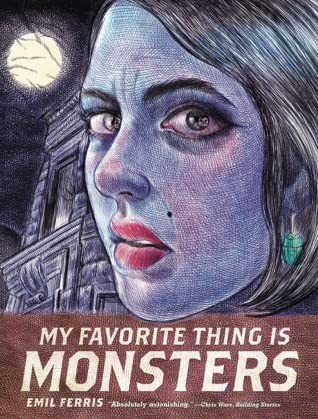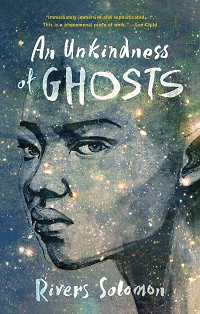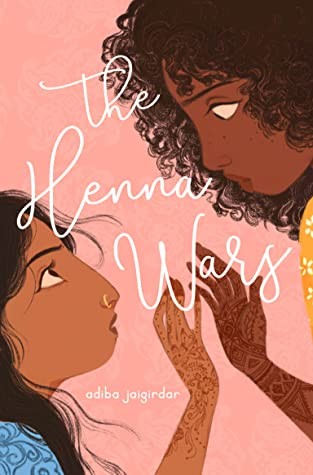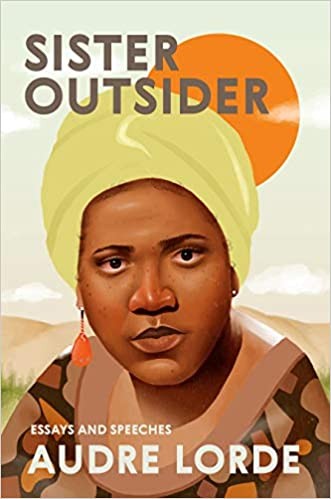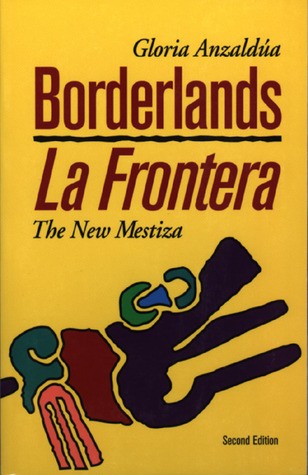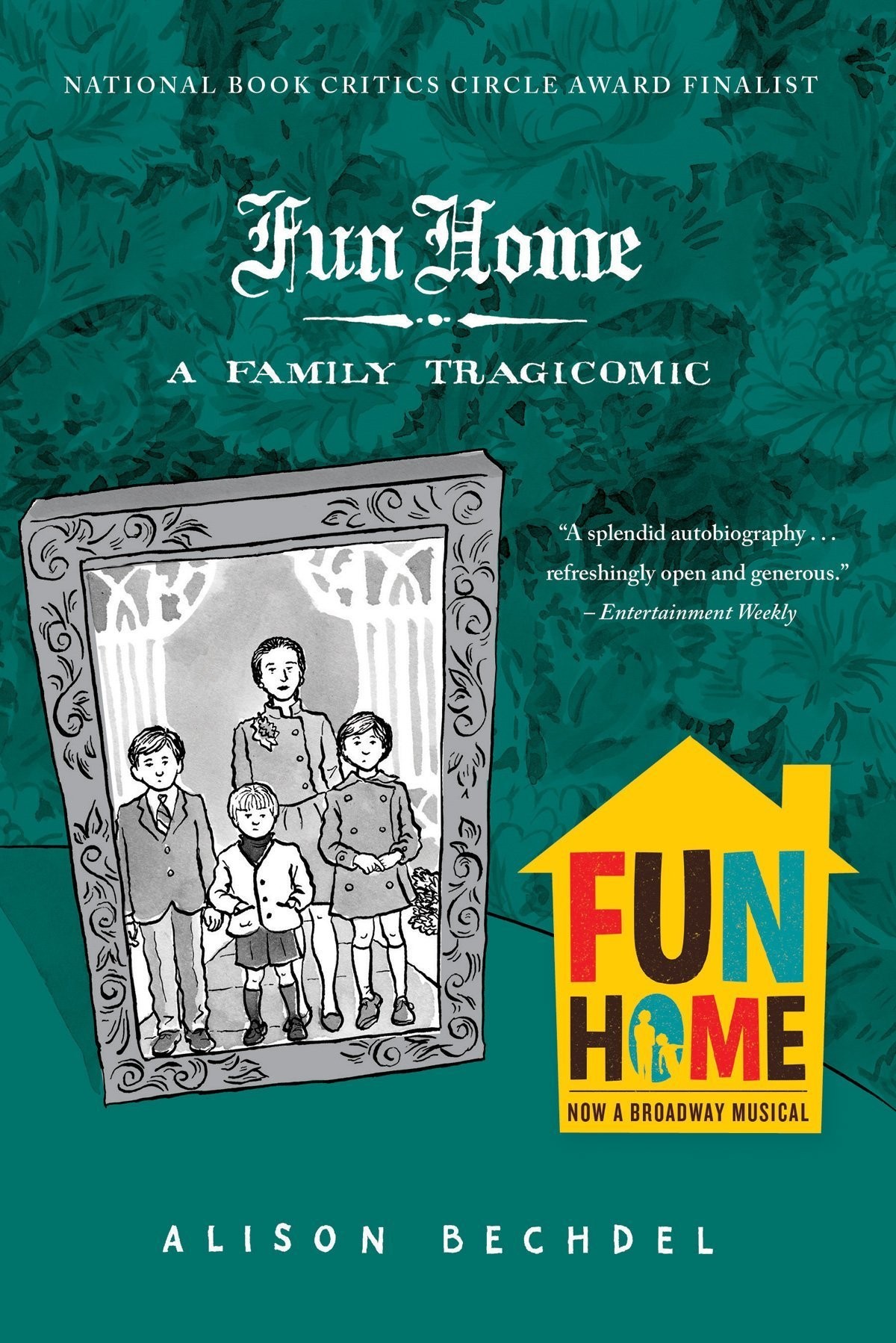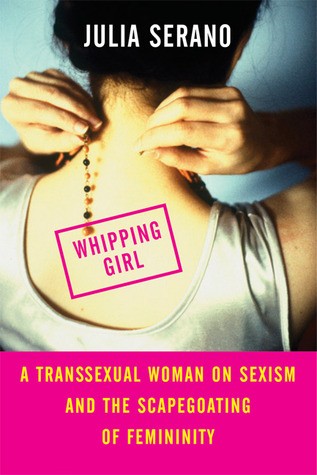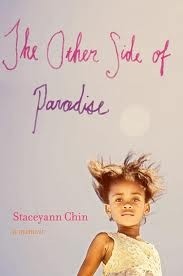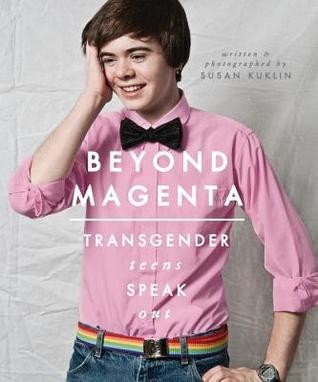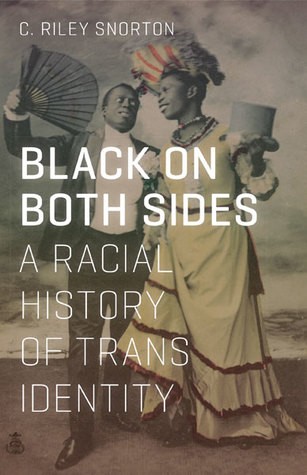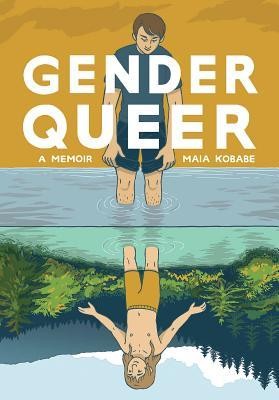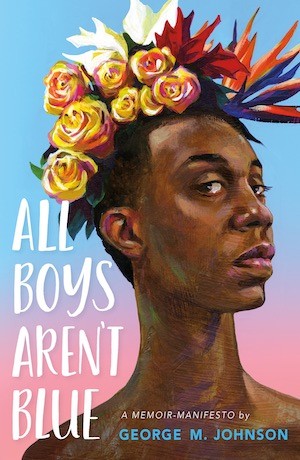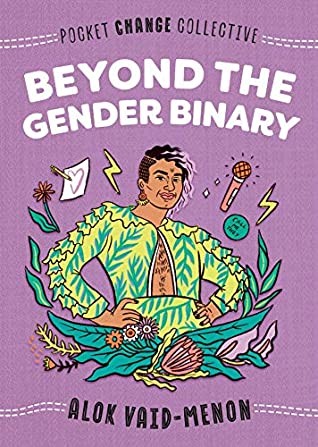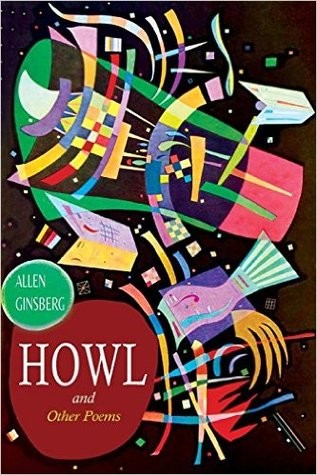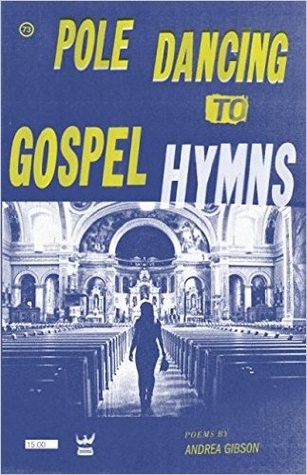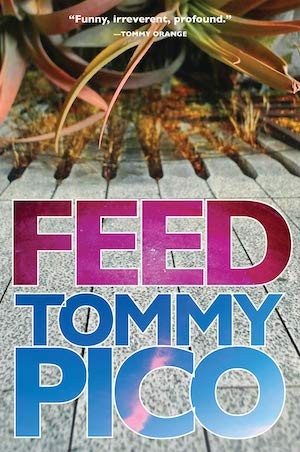As we celebrate another Pride Month, it’s crucial to recognize the significance of visibility for the queer community. Throughout centuries, authors have played a vital role in increasing acceptance by writing about their experiences, love, and pain. From semi-autobiographical novels to powerful poetry and deep explorations of history, queer literature has had a profound impact on generations of readers.
As someone who identifies as pansexual, demisexual, and cisgender, I’m excited to share this list with you. It’s an opportunity for me to explore new stories, educate myself on various histories, and acknowledge the complexities within our community. Queer texts not only increase visibility but also foster internal understanding and acceptance. Unfortunately, transphobia remains prevalent, and there are still many issues, histories, and experiences that we must confront and learn from.
The beauty of queerness lies in its diversity – it’s impossible to contain or define. This June, I encourage you to challenge yourself by exploring new genres, such as contemporary fantasy or poetry. Delve into the classics if you haven’t already, or take a chance on a history that may be unfamiliar. If you’re looking to learn more about asexuality or genderqueerness, now is the perfect time.
I must admit that creating this list was a challenging task, and I’m grateful for the abundance of influential queer literature out there. Each reader will undoubtedly have their own unique recommendations, and I welcome any suggestions. While I’ve included content warnings where possible, it’s essential to note that some books may contain homophobia or other sensitive themes. As with all reading experiences, please do additional research if you have specific concerns.
Fiction: Semi-Autobiographical, Fantasy, and More
Carmilla by J. Sheridan Le Fanu (1872)
In the summer, Carmilla is taken in by Laura’s family, and despite the unsettling nightmares that follow, Laura finds herself increasingly enthralled by Carmilla’s captivating beauty. The edited version of the classic novel by Carmen Maria Machado stands out for its nuanced exploration of lesbian love and historical context. Machado’s footnotes bring a richness to the text, highlighting queer undertones and shedding light on Le Fanu’s use of letters to craft the story.
The edition is further elevated by Robert Kaiza’s beautiful illustrations. While Carmilla may be perceived as a monstrous lesbian preying on Laura, this timeless tale has had a profound impact on popular culture, inspiring web series, films, music, authors like Anne Rice, and even vampiric women in games and anime such as Castlevania.
The Picture of Dorian Gray by Oscar Wilde (1891)
In Oscar Wilde’s iconic novel, the protagonist is driven to sacrifice his soul to preserve his youthful appearance and allure. Notwithstanding attempts by his publishers to tone down the book’s underlying homoerotic themes, it remains an intensely queer narrative that has only become more palpable with time. The story delves into complex human emotions, exploring the intricacies of beauty, vanity, and morality.
Wilde’s own experiences as a pioneering figure in the LGBTQ+ community are well-documented. Prior to his untimely demise, he faced severe consequences for his personal choices, including being arrested, convicted, and publicly shamed for alleged indecency with men during a highly publicized trial. Tragically, Wilde passed away suddenly in 1900 due to meningitis complications in Paris, just three years after his release from imprisonment.
Two Virgins in the Attic by Nobuko Yoshiya, untranslated (1919)
Yoshiya’s trailblazing contributions to Japanese lesbian literature have left an indelible mark on the literary world. Her initial series, ‘Flower Tales’, comprises 52 stories that delicately explore themes of romantic friendships, longing, and unrequited love. This was followed by her semi-autobiographical masterpiece, ‘Two Virgins in the Attic’, which recounts the poignant tale of two female roommates who defy societal norms to form a lasting bond.
Yoshiya’s courageous decision to publicly showcase her own queerness, as well as her androgynous style and fierce independence, has inspired countless readers. Furthermore, she was open about her relationship with life partner Monma Chiyo, whom she adopted in 1957 as the only means of ensuring legal protections for their partnership.
Despite being an out lesbian and independent woman in a time when such identities were rare, Yoshiya’s work enjoyed immense popularity, solidifying her status as one of modern Japan’s most commercially successful authors. Unfortunately, ‘Two Virgins in the Attic’ remains an untitled treasure in Japanese literature, awaiting translation to share its significance with a global audience.
The Well of Loneliness by Radclyffe Hall (1928)
In 1928, John Hall’s semi-autobiographical novel told the story of her own struggles as an openly lesbian individual who had been cast out of her home. The story, while not explicit in its sexuality, was met with backlash upon its publication. As a self-identified ‘invert,’ Hall drew parallels between herself and her protagonist Stephen, a butch writer grappling with acceptance and love.
Both Hall and Stephen were driven to share their truth through writing, recognizing it as a powerful tool for challenging societal perceptions of the queer community. Despite being deemed acceptable by UK standards, the novel was subjected to an obscenity trial, resulting in all copies being destroyed. In the U. S., the book faced a lengthy court battle before finally being allowed publication.
The novel’s poignant portrayal of sapphic women makes it a pioneering work in lesbian fiction, paving the way for future authors who would explore similar themes.
Orlando: A Biography by Virginia Woolf (1928)
In Virginia Woolf’s groundbreaking 1928 novel, Orlando, a nobleman named Orlando undergoes a remarkable transformation when he falls into a several-day sleep and awakens in a woman’s body. This bold feminist narrative not only pokes fun at gender roles but also challenges the notion that they are innate to biology, suggesting instead that societal expectations shape our understanding of femininity and masculinity.
As Orlando navigates his new female form, his inner self remains unchanged, yet the reactions he receives from those around him prompt a shift in his behavior. Woolf’s use of fantastical elements enables her to tackle radical topics like gender, sexuality, transition, and pronouns, ultimately blurring the lines between reality and fantasy.
The novel was partially inspired by Woolf’s relationship with Vita Sackville-West, a trailblazing individual who defied conventional norms and expectations around gender and sexuality. Upon its release, Orlando received widespread acclaim, solidifying its status as a contemporary success.
Goodbye to Berlin by Christopher Isherwood
The City and the Pillar by Gore Vidal (1948)
As Jim Willard and his best friend Bob Ford embark on a camping trip before Bob leaves high school, their adventure takes an unexpected turn. Despite the excitement of their escapades, Jim is left feeling disappointed when Bob joins the U. S. Merchant Marine shortly after. The novel then jumps forward seven years, chronicling Jim’s life as he holds onto hope that he’ll one day be reunited with Bob. Meanwhile, in the literary world, James Baldwin’s ‘The City and the Pillar’ was making waves.
Often referred to as the first post-World War II novel featuring a gay protagonist portrayed sympathetically, the book deviates from common tropes by not ending with the character’s demise. Vidal aimed to humanize a gay man who embodied masculinity, challenging prevailing stereotypes. The book’s release sparked controversy, solidifying its status as one of the most notorious gay novels of the mid-1900s.
As a result, Vidal was blacklisted and forced to write under pseudonyms for nearly six years, earning him a content warning due to themes of sexual assault that appear in his work.
The Price of Salt by Patricia Highsmith (1952)
When Carol was first published, Highsmith had to release it under a pseudonym due to the societal norms of her time. In the 1950s, lesbian stories were expected to have tragic endings, making Highsmith’s portrayal of a hopeful conclusion between an older socialite and a young shopgirl revolutionary and groundbreaking.
The novel also drew inspiration from Highsmith’s own life, with Therese being influenced by her personal experiences and the tumultuous divorce story she had witnessed in one of her former lovers’ relationships. This semi-autobiographical account, as it was published, went on to become the basis for the 2015 film adaptation, Carol, which received widespread acclaim upon its premiere at the Cannes Film Festival, earning a 10-minute standing ovation from the audience.
The movie’s critical reception has been equally impressive, boasting a score of 94/100 on Metacritic and 94% on Rotten Tomatoes. This cinematic masterpiece has not only spawned a devoted fan base but also solidified its place within the lesbian literary canon. Please be aware that this story contains themes of stalking and suicidal thoughts.
Giovanni’s Room by James Baldwin (1956)
David, a self-proclaimed straight American expat, has long struggled with his own internalized homophobia. His world is turned upside down when he meets Giovanni, a charismatic bartender who challenges David’s carefully constructed identity. As David navigates his growing feelings for Giovanni, he’s forced to confront the shame and repression that have defined his life.
He yearns to distance himself from the gay community, its seedy bars, and the effeminate, seeking instead to present a façade of heterosexuality. James Baldwin’s masterpiece, ‘Giovanni’s Room’, is a powerful exploration of internalized homophobia, shame, repression, and self-destruction. According to Baldwin, the novel isn’t about homosexuality per se, but rather what happens when one is so consumed by fear that they’re unable to love at all.
The book’s portrayal of same-sex and bisexual desire in the Western literary world was groundbreaking, yet not without controversy. Critics took issue with the fact that the two gay lovers were white, a decision that seemed to defy the very diversity the novel sought to champion. In response, Baldwin’s American publisher advised him to destroy the manuscript, fearing it would alienate him from his Black audience.
Thankfully, he chose to publish the book anyway, and its impact has been felt by generations of queer authors who have followed in his footsteps.
City of Night by John Rechy (1963)
In John Rechy’s seminal work, a gay hustler’s journey through New York City, New Orleans, Los Angeles, and San Francisco serves as a poignant reflection of queer life. The book not only inspired countless individuals, filmmakers, and artists but also drew attention to the pivotal Cooper Do-nuts Riot in 1959.
This landmark event, which saw police attempt to arrest two drag queens, two male sex workers, and Rechy himself, was a direct response to LA’s discriminatory laws targeting gender-nonconforming individuals. The riot, marked by police brutality and mass arrests, remains an oft-overlooked yet crucial chapter in the struggle for queer rights.
Unfortunately, the LAPD failed to report or corroborate the incident at the time, and subsequent attempts to recover records were thwarted when they were destroyed. Rechy’s account in his novel thus stands as the sole original documentation of this watershed moment, with some regarding it as the first gay uprising in the United States. Content warnings: drug use, transphobia.
Thérèse and Isabelle by Violette Leduc, translated by Sophie Lewis (1966)
Young Leduc’s early supporters, including the influential Simone de Beauvoir and Albert Camus, were captivated by her bold writing style that dared to push boundaries and explore themes of sexuality and sex with unprecedented candor. However, when Leduc first submitted her novella for publication, it was met with resistance from publishers who deemed its explicit descriptions of lesbian relationships and female desire too provocative.
The literary revolution that had supposedly opened the floodgates of creative expression seemed to have left Leduc’s work in the dust. It wasn’t until she published her autobiography, La Bâtarde, that she gained the recognition she deserved, which ultimately allowed her to successfully publish this novella in 1966. The short erotic novel tells the story of two boarding school girls discovering each other’s bodies and exploring their own desires.
Thankfully, thanks to the efforts of The Feminist Press at CUNY and translator Sophie Lewis, this groundbreaking work is now available in its unedited form to a US audience, offering a long-overdue glimpse into Leduc’s courageous storytelling.
Maurice by EM Forster (1971)
The life of Maurice Hall is one of quiet struggle, as chronicled in E. M. Forster’s novel. As a Cambridge student, Maurice comes to terms with his homosexuality, only to face a lifetime of internalized homophobia, heartbreak, and the threat of blackmail. Despite sharing his true nature with close friends, Forster was hesitant to publish Maurice’s story due to the societal taboos surrounding male homosexuality in England at the time.
The author’s own fear of prosecution and public homophobic sentiment, which could have resulted from a novel with a happy ending, further solidified his decision not to share Maurice’s tale during his lifetime. Although Forster’s other works, such as A Passage to India, may contain subtle queer themes, it wasn’t until after the author’s passing in 1970 that Maurice finally saw the light of day. The note left on the manuscript, ‘Punishable, but worth it?
‘ serves as a poignant reminder of Forster’s own commitment to sharing his protagonist’s story, despite the risks involved.
Rubyfruit Jungle by Rita Mae Brown (1973)
Rita Mae Brown’s seminal novel is a pioneering work of lesbian coming-of-age storytelling that has had a profound impact on many queer women. The book stands out for its unapologetic portrayal of young Molly Bolt, an adopted daughter from a low-income family, who discovers her attraction to girls at a remarkably early age and sees it as completely normal.
This groundbreaking novel challenges traditional gender roles and binaries within the queer community, refusing to conform to societal expectations imposed on individuals. First published in 1973 by Daughters, Inc., a feminist press, the book became an underground bestseller, selling 70,000 copies despite being largely overlooked by critics. Its subsequent reissue by Bantam in 1977 led to even greater success, with over one million copies sold.
The novel’s immense popularity spawned a cult of personality around Brown, who was already deeply involved in women’s and queer rights movements – to the point where fans would camp out on her doorstep. Please note that this book contains mature themes and triggers for incest, racial slurs, age gap, anti-Semitism, and sexual assault.
The Faggots & Their Friends Between Revolutions by Larry Mitchell (1977)
Mitchell’s life in Lavender Hill, a queer commune in Ithaca, New York, was the catalyst for his creative endeavor – a collection of vignettes that chronicle the experiences of a diverse group of individuals who identify as gay men, feminists, drag queens, lesbians, and queer men. This community, comprising artists, activists, and free spirits, lived together, created art, explored relationships, and awaited a revolution while under the rule of a declining patriarchal empire.
Although it initially went out of print after Mitchell self-published the work, the book rapidly gained a devoted following and was disseminated through photocopies and digital files until its re-release in the 2010s by Nightboat Books to commemorate the 50th anniversary of the Stonewall Riots. This narrative is accompanied by content warnings for scenes involving rape, drug use, and violence.
Faggots by Larry Kramer (1978)
As Fred Lemish approaches the milestone age of 40, he’s resolute in his quest to find a meaningful long-term connection. With his newfound svelte physique, he believes the timing is ripe. However, navigating the gay subculture of the 1970s proves to be a far cry from finding true love. Instead, Fred finds himself immersed in a series of fleeting encounters at bathhouses, casual hookups, discos, and orgies, fueled by an array of party drugs.
The book’s unflinching portrayal of this reckless behavior sparks controversy within the gay community, prompting some to ban it from Manhattan’s only gay bookstore upon its release. While Kramer’s scathing critique of gay promiscuity and cruising culture initially strikes a nerve, his commentary on a community taking excessive risks begins to resonate in the wake of the AIDS crisis revelations.
With these themes in mind, readers should be aware that the following content includes depictions of fatphobia, drug use, and sexual assault.
Tales of the City by Armistead Maupin (1978)
Armistead Maupin’s iconic series, Tales of the City, began taking shape in 1974 with his first newspaper column in the San Francisco Chronicle. The serial follows Mary Ann Singleton as she leaves Ohio for San Francisco and finds herself drawn to the city’s vibrant atmosphere. Her new home at 28 Barbary Lane becomes a hub for her adventures and encounters with an array of colorful characters, including the enigmatic Mona Ramsey and Michael Tolliver.
This series is a loving ode to San Francisco, blending humor and pathos as it explores the complexities of human relationships. Maupin’s writing pushed boundaries, tackling themes like transgender identity and AIDS awareness, long before mainstream media dared to touch these subjects. The 1983 revelation of a character’s death from AIDS sparked controversy, but also brought much-needed visibility to the crisis when Rock Hudson’s real-life diagnosis was publicly disclosed in 1985.
At its core, Tales of the City is a groundbreaking LGBTQ+ literary achievement, written from Maupin’s own queer perspective and offering crucial insights into the experiences of marginalized individuals. Notably, the series tackles mature themes such as suicide, drug use, pedophilia, child abuse, addiction, and racism, making it essential reading for those seeking to understand the complexities of queer life.
The Color Purple by Alice Walker (1982)
The profound influence of Alice Walker’s 1983 Pulitzer Prize-winning novel cannot be overstated. The story revolves around Celie, a young Black teenager living in the southern United States during the early 20th century who endures relentless sexual and physical abuse at the hands of her father and later, her husband. As Celie matures, she finds solace and connection with jazz and blues singer Shug Avery, ultimately leading to a passionate romantic relationship.
This powerful novel chronicles Celie’s journey from oppression to independence and contentment as a queer Black woman. Despite facing intense criticism for its graphic depictions of violence and queerness, the book remains one of the most significant and influential works in the queer literary canon. It is essential to acknowledge that Alice Walker has been criticized for promoting anti-Semitic conspiracy theories, which have led to controversy surrounding her work and views.
Readers are advised that this novel contains explicit content, including themes of rape, incest, child abuse, sexual violence, racial slurs, and domestic abuse.
Annie on My Mind by Nancy Garden (1982)
This pioneering novel has been a lightning rod for controversy since its release in 1982. Its portrayal of two teenage girls’ unwavering commitment to each other and their love amidst societal pressures from their families and communities has been met with numerous bans over the years. Despite this, the book’s enduring popularity has seen it remain in print throughout, earning recognition as one of the most influential books of the 20th century by the School Library Journal.
The American Library Association further honored the author with the Margaret A. Edwards Award for lifetime contributions to young adult literature in 2003. What sets this novel apart is its unapologetic positivity, a stark contrast to the tragic endings that dominated YA fiction at the time. It became a beacon of hope for teenage girls seeking happy endings and themselves.
While controversy surrounded the book’s removal from Olathe South High School’s library in Kansas, the subsequent ACLU lawsuit against the school district in 1994 led to a landmark federal court ruling that deemed the removal unconstitutional and a violation of students’ First Amendment rights. This pivotal moment underscored the novel’s rebellious spirit and its impact on challenging social norms. Content warnings apply for outing and religious bigotry.
Oranges Are Not the Only Fruit by Jeanette Winterson (1985)
In this semi-autobiographical novel, author [Author] masterfully weaves together themes of identity, family, and faith as Jeanette, a young girl growing up in an evangelical household in England, navigates the complexities of adolescence. Her desire to become a missionary is challenged when she develops feelings for another girl at the market, and her family’s discovery of these emotions sparks a tumultuous reaction from her mother.
Determined to ‘cure’ Jeanette of what they perceive as a sinful inclination, her mother’s efforts only serve to further alienate her from her family and community. As Jeanette struggles to reconcile her faith with her burgeoning sexuality, she must confront the harsh realities of religious bigotry and child abuse that surround her. Despite tackling tough and painful subjects, the novel is also infused with humor and whimsy, earning it a place as a modern queer classic.
The Gilda Stories by Jewelle Gomez (1991)
In Jewelle Gomez’s captivating novel, a runaway woman escapes the shackles of slavery in 1850s Louisiana and finds herself working in a brothel. As she navigates this new reality, she is initiated into the mysterious world of vampirism by the other women of the establishment, adopting the enigmatic name Gilda.
What follows is a journey that transcends time – from the sun-kissed streets of 1890 California to the snow-covered landscapes of 1955 Massachusetts, and finally, to the futuristic realm of ‘Land of Enchantment’ in 2050. Gomez’s trailblazing work not only redefined the genre of vampire fiction but also paved the way for Afrofuturism, a movement she was instrumental in co-founding. The novel’s impact is evident, having been voted one of Book Riot’s Most Influential Horror Novels of All Time.
Gilda’s story, told through Gomez’s masterful storytelling, is a testament to the power of perseverance and self-empowerment, particularly for women of color who have been historically marginalized. As an activist herself, Gomez has dedicated her life to promoting social justice, serving on the founding board of GLAAD and advocating for lesbian feminist thought and activism. Her own experiences, including her fight for legal marriage with her partner, Dr.
Diane Sabin, only add to her influence as a pioneering figure in speculative fiction. Content warnings: this novel tackles mature themes, including rape, body horror, suicide, racism, racial slurs, and drug use.
Bastard Out of Carolina by Dorothy Allison (1992)
In a poignant moment from Autostraddle’s 2011 ‘Read a F*cking Book Club,’ a member shared their fervent belief that every lesbian should read Dorothy Allison’s powerful novel, Bastard Out of Carolina. This conviction was not only sold but also underscored by the book’s unflinching portrayal of complex themes and experiences.
Ruth Anne ‘Bone’ Boatright, born with the stigma of illegitimacy, navigates a life marked by her mother Anney’s troubled relationship with Glen Waddell, a man plagued by anger issues that manifest in sexual and physical abuse towards Bone. Notably, Anney’s inability to leave this toxic partner is a testament to the cyclical nature of abuse.
This novel tackles themes of sexuality, trauma, otherness, and family dynamics, presenting a candid and unapologetic exploration of child abuse, poverty, toxic masculinity, and the American South. It’s essential to note that this book contains graphic depictions of child abuse (sexual and physical), sexual assault, alcoholism, racial slurs, and animal death, making it crucial for readers to approach with caution.
Stone Butch Blues by Leslie Feinberg (1993)
Jess Goldberg’s story is a powerful testament to resilience in the face of adversity. A butch working-class lesbian living in 1970s America, Jess faces a multitude of challenges, including sexual assault, harassment, gender dysphoria, and trauma. Yet, despite these hardships, she emerges hopeful about her future. This narrative is all the more remarkable given its impact on the queer community.
Laura Stackton from Book Riot describes it as ‘the kind of queer, trans narrative we badly need: honest, freeing, and vital.’ The book has played a critical role in shaping discussions around gender-nonconformity, sex work, labor activism, and other important issues. Its influence extends beyond academia to popular culture, with the novel being passed hand-to-hand inside prisons and selling hundreds of thousands of copies.
Leslie Feinberg’s legacy extends far beyond her own writing, as she went on to advance a Marxist concept of transgender liberation. Prior to her passing due to complications from multiple tick-borne co-infections, including Lyme disease, she insisted that the 20th anniversary edition of her novel be made freely available online to the public. The full text can be accessed here. Note: This narrative contains content warnings for rape, suicide, anti-Semitism, racism, and transphobia.
Notes of a Crocodile by Qiu Miaojin, translated by Bonnie Huie (1994)
Chelsea Girls by Eileen Myles (1994)
Funny Boy by Shyam Selvadurai (1994)
Tipping the Velvet by Sarah Waters (1998)
In the late 19th century, Nan’s infatuation with male impersonator Kitty knows no bounds. Her obsession leads her to follow Kitty to London, where they soon find themselves performing as men in the city’s music halls. As we delve into Nan’s journey, we witness her romantic entanglements and gradual transition into adulthood.
Waters’ vision for this novel was to subvert traditional lesbian fiction tropes by having Nan thrive within Victorian society, exploring themes of queerness and gender experimentation amidst the era’s social norms. The book’s success was further amplified when it was adapted into a BBC television drama serial in 2002, expanding its reach and impact. Please be advised that this novel contains content warnings for emotional and physical abuse, racism, and suicidal thoughts.
Beijing Comrades by Bei Tong, translated by Scott E. Myers (1998)
In the late 1980s China, a self-absorbed playboy entrepreneur finds himself drawn to Lan Yu, a working-class student from a different world. As he navigates his newfound interest in another man, he must confront the complexities of his own identity and the societal pressures that surround him. This poignant love story not only explores an explicit, erotic same-sex relationship but also sheds light on the tumultuous Tian’anmen Square protests and the government’s crushing repression.
The author, Bei Tong, first shared this tale under a pseudonym online, before Scott E. Myers brought it to life in English, carefully weaving together years of published versions – some of which were censored – into a single, cohesive edition. With content warnings for violence, internalized homophobia, and sudden death, readers can expect an emotionally charged journey that delves deep into the human experience.
Valencia by Michelle Tea (1999)
As I wandered through the streets of San Francisco, a local bookstore recommended an autobiographical novel that delved into the lives of queer women in the Mission District. The book is a poignant reflection on the author’s traumatic past, woven together with tales of her experiences in queer and kink communities, now largely a relic of contemporary San Francisco.
The story is a candid portrayal of punk and dyke culture, capturing the essence of being in love with girls, as well as the highs and lows that come with it. Tea’s straightforward prose brings to life characters such as Marta, Willa, Iris, and Magdalena, each with their own stories of heartbreak, romance, drama, and passion. Please be advised that the book contains content warnings for drug use, childhood trauma, child abuse, and alcoholism.
Rainbow Boys by Alex Sánchez (2001)
Jason, Kyle, and Nelson, three high school teenagers, grapple with their queerness – Jason, a star basketball player, has a lot to lose if he admits his bisexuality; Kyle keeps his sexuality hidden from his parents, fearing discovery; while Nelson is the first in his grade to be openly gay, thanks to his supportive mother. Sánchez’s novel was a pioneering work that helped pave the way for future gay young adult fiction.
The book is a quick and engaging read that explores queerness and homophobic bullying. While some reviewers may downplay the relevance of the bullying or homophobia depicted in the story, it remains an important reminder that many young queer people still face challenges navigating a world riddled with toxic masculinity. Content warnings include child abuse, domestic violence, biphobia, and alcoholism.
Boy Meets Boy by David Levithan (2003)
The memory of this book is still vivid in my mind. It was everywhere, boasting a unique selling point that resonated deeply with many readers. The town in the story is a fantasy where homophobia doesn’t exist, and protagonist Paul is a prime example of this. He came out at just five years old and has since grown up surrounded by loving family and supportive friends.
For queer readers, it was revolutionary to read a YA book where the main character’s queerness wasn’t relegated to the background or used as a plot device, but rather was simply a normal aspect of his life. While some aspects may seem outdated today, it’s essential to acknowledge the significant impact this book had on providing representation and acceptance for queer teens. As with many stories, however, it’s not without its flaws.
Readers should be aware that the book contains content warnings for deadnaming, transphobia, and religious bigotry.
The Line of Beauty by Alan Hollinghurst (2004)
In the pages of this novel, we’re introduced to Nick Guest, a gay man from middle-class England in the 1980s who has just graduated from Oxford. As he settles into the Fedden family home while they’re away in France, Nick forms an unlikely bond with their daughter Cat, helping her through a difficult episode of self-harm. His presence becomes permanent, but it’s built on an unspoken understanding that he keep his sexuality hidden.
The novel deftly explores themes of privilege, HIV/AIDS, beauty, and the disconnect between politics and reality, as well as the crushing weight of homophobia both internalized and external. This powerful story earned the 2004 Booker Prize and has been recognized by literary critics, including ranking 38th on The Guardian’s list of the 100 best books of the 21st century. It’s a thought-provoking read that tackles tough subjects, including drug use, self-harm, and death.
Call Me by Your Name by André Aciman (2007)
In the summer of 1980s Italy, a tender romance blossomed between Elio, a 17-year-old bisexual teenager, and Oliver, a 24-year-old American Jewish scholar visiting from afar. This unlikely pair’s secret affair was marked by passion, curiosity, and the uncertainty that often accompanies first love.
Over the next two decades, their lives took divergent paths as they navigated separate journeys, punctuated by periodic reunions and nostalgic reminiscences about their fleeting yet profound summer together. The novel received widespread acclaim for its nuanced portrayal of obsessive love, earning a Lambda Literary Award for Gay Fiction in the process.
While some readers have raised eyebrows over the significant age gap between Elio and Oliver, the book’s cultural significance remains unassailable following the release of the film adaptation in 2017, which garnered multiple Academy Award nominations. As with any creative work that tackles mature themes, content warnings are issued for depictions of adult-minor relationships and sexual assault.
Ash by Malinda Lo (2009)
In the world of Ash, also known as Aisling or simply Ash, a teenage girl finds herself trapped in a life of servitude, working tirelessly to pay off her father’s debt. Her days are filled with the drudgery of servile duties, but at night, she lets her imagination run wild, dreaming of becoming a character from one of her beloved fairy tales.
Little does she know, her deepest desires are about to come true when she meets Sidhean, a charming fairy prince who whisks her away to the mystical realm of the faerie kingdom. However, as Ash becomes entangled in a web of magic, love, and broken deals, she finds herself torn between two strong personalities: Kaisa, a noble huntress, and Sidhean himself.
This thought-provoking sapphic retelling of Cinderella has become a modern queer classic, paving the way for a new generation of queer fantasy reimaginings.
The Song of Achilles by Madeline Miller (2011)
Madeline Miller’s work had a profound impact on the literary world by reinvigorating interest in classical mythology from a queer perspective. Her novel, The Song of Achilles, masterfully retells the story of Achilles through the eyes of Patroclus, an exiled prince. At its core is a poignant romance that defies convention by exploring the tender love between two men, including Achilles, one of the most iconic masculine figures in mythology.
This groundbreaking work not only became a New York Times bestseller but also helped pave the way for a wave of new novels reimagining myths and broke down barriers within the classical community. As a result, it has become a beloved favorite among many members of the queer community. Please note that this novel contains themes of rape and violence.
The Miseducation of Cameron Post by emily m. danforth (2012)
Cameron Post, a 12-year-old girl, finds herself at the center of a tumultuous journey after her parents’ tragic car accident sends her to live with her conservative aunt and grandmother in Miles City, Montana. As Cameron navigates this new environment, she must confront the harsh reality that being gay is not accepted in her small town.
Despite having previously enjoyed fleeting relationships with other girls, Cameron finds herself drawn to her friend Coley, leading to a romantic connection that ultimately puts her at risk of discovery. The consequences are dire, as Cameron’s family intervenes and sends her to a conversion camp, a brutal attempt to ‘fix’ her perceived deviance.
This powerful novel, adapted into an award-winning film starring Chloë Grace Moretz, has been recognized as the #1 Most Influential LGBT Book in Literature by BuzzFeed. What’s more fascinating is that this book was actually Danforth’s dissertation. This heart-wrenching tale of queer survival serves as a poignant reminder of the devastating impact conversion camps can have on queer youth, highlighting the mental anguish and cruelty they endure.
Content warnings: drug use, self-harm, religious bigotry, conversion therapy, forced institutionalization, outing, suicide attempt.
Aristotle and Dante Discover the Secrets of the Universe by Benjamin Alire Sáenz (2012)
Nevada by Imogen Binnie (2013)
Maria Griffiths’ life was moving at a steady pace until her girlfriend’s infidelity sent her spiraling. The discovery triggered a downward spiral that led Maria to make some questionable decisions – taking heroin and commandeering her friend Steph’s car for a road trip out of New York City and across the country. Her journey took an unexpected turn in Nevada, where she met James, who bore striking resemblance to her younger self. James’ presence rekindled a sense of familiarity within Maria.
Author Binnie aimed to write a book that would authentically represent the trans experience for trans women, without romanticizing or tokenizing it for cisgender readers. The result is a powerful and unflinching cult classic that delves into the complexities of punk culture and the struggles faced by a trans woman as she navigates her world. Note: this book contains mature themes, including transphobia, drug use, addiction, deadnaming, and suicidal thoughts.
Melissa by Alex Gino (2015)
Simon vs. the Homo Sapiens Agenda by Becky Albertalli (2015)
I’m often asked about book recommendations, particularly by friends who haven’t yet discovered the heartwarming romantic comedy by Albertalli. The novel tells the story of Simon, a gay teenager who isn’t out to his peers, but has found an anonymous online connection with another boy named Blue. Their romance blossoms through email exchanges, but Simon’s world is turned upside down when class clown Martin threatens to reveal his secret.
This sweet and genuine portrayal of teenage struggles, awkwardness, drama, and humor is a testament to the power of storytelling. The book was adapted into an excellent film, Love, Simon, which premiered in 2018 and featured Nick Robinson, Keiynan Lonsdale, Katherine Langford, and Alexandra Shipp. Notably, it was the first major Hollywood studio production to focus on a gay teen romance. Due to its themes of forced outing, this book may contain triggers for some readers.
Lumberjanes, Vol. 1: Beware the Kitten Holy by Noelle Stevenson, Grace Ellis, Shannon Watters, illustrated by Brooklyn Allen, colorist Maarta Laiho, Aubrey Aiese (2015)
The Eisner Award-winning comic series, Lumberjanes, follows a diverse group of girls as they navigate supernatural mysteries and earn scout badges at Miss Quinzella Thiskwin Penniquiqul Thistle Crumpet’s Camp for Hardcore Lady Types. The five scouts from the Roanoke cabin embark on thrilling adventures, fostering strong bonds of female friendship along the way. The series, originally planned as an eight-part story, expanded to 75 issues and a single finale due to its remarkable popularity.
Notably, Lumberjanes features a Navajo trans girl with two gay fathers, as well as a sapphic relationship between Molly and Mal, promoting representation of queerness and female relationships for young readers. The series’ dedicated fanbase, affectionately dubbed the Lumber Jumbies, has continued to grow. It’s essential to note that the series tackles mature themes like animal death and violence.
Under the Udala Trees by Chinelo Okparanta (2015)
In this 1960s Nigerian-set novel, Christian Igbo protagonist Ijeoma’s emerging feelings for Muslim Hausa Amina are met with intense homophobia and pressure from her family to conform to societal expectations. This starkly contrasts with the current criminalization of same-sex relationships in modern-day Nigeria. Notably, Okparanta has faced criticism from Western readers who perceive strong homophobia as a relic of the past or view Africa as inherently ‘behind’ or ‘backward’ relative to the US.
In response, Okparanta’s work aims to bring queerness in Nigeria to the forefront, highlighting the perils queer individuals face when attempting to live authentically. This narrative is accompanied by content warnings for rape, sexual assault, violence, domestic abuse, and miscarriage, as well as religious bigotry.
La Bastarda by Trifonia Melibea Obono, translated by Lawrence Schimel (2016)
Okomo, a teenager living under the strict supervision of her grandmother and the oppressive constraints of Fang cultural norms, feels suffocated by the traditional expectations placed upon her. As she’s drawn into a group of unconventional young women, Okomo begins to uncover a new reality – one that’s vastly different from the life her grandmother has planned for her.
This world is characterized by nonconformity and queerness, with Marcelo, her ‘man-woman’ uncle, serving as a symbol of acceptance and self-expression. Notably, this novel marks a significant milestone in LGBTQ+ literature as it’s the first written by an Equatorial Guinean woman to be translated into English. Although still available for purchase in certain parts of the country, the book has been officially banned in Equatorial Guinea due to its portrayal of a gay protagonist.
As such, it remains a vital addition to the queer canon from a courageous, bisexual author who boldly explores themes of identity, sexuality, and empowerment. Content warnings: this novel addresses mature topics including sexual assault, incest, domestic abuse, and child abuse.
Every Heart a Doorway by Seanan McGuire (2016)
The Wayward Children series by McGuire has been a guiding light for countless queer teens and adults since its inception. The series follows children who unwittingly slip through doors into fantastical worlds, only to find themselves lost in reality. These novellas delve into the struggles of trauma, belonging, and rebellion as these characters navigate their own identities – often with a longing to return to their original worlds.
This sense of displacement is relatable to many young queer individuals who feel they no longer fit into societal norms. The series has proudly featured a diverse array of characters, including those who are asexual, trans, sapphic, and intersex, among others. As the series continues to unfold, it’s become increasingly significant for readers, with ongoing themes of identity, trauma, and belonging that resonate deeply.
When the Moon was Ours by Anna-Marie McLemore (2016)
In the midst of chaos, Miel and Sam’s friendship blossomed after a fateful incident involving the old water tower. The roses that grew from Miel’s wrists became the focal point of intrigue for the Bonner sisters, with their own desires for those flowers driving the narrative forward. Amidst this complex web of relationships, the true beauty of McLemore’s writing shines through in vivid descriptions and linguistic mastery.
As a queer Latine author who identifies as nonbinary and bigender, McLemore brings authenticity to the story, exploring themes of gender fluidity with remarkable insight. The novel also features a trans boy and trans woman at its core, tackling these issues with sensitivity and nuance. This critically acclaimed book has won numerous awards, including the James Tiptree Jr.
Award and the Stonewall Honor Award, as well as earning a National Book Award longlist nomination in Young People’s Literature. However, readers should be aware that this story contains content warnings for transphobia, deadnaming, violence, child abuse, and suicide attempt.
Less by Andrew Sean Greer (2017)
Arthur Less’s life is a reflection of his struggles as a 49-year-old gay writer still searching for meaningful success. When his ex-lover invites him to their wedding, Less embarks on an unconventional journey around the world, accepting invitations he’d normally decline in order to avoid the ceremony altogether. As he navigates this path, the book masterfully weaves together themes of heartbreak, aging, and mortality.
The result is a satirical exploration that resonated deeply with readers, earning it a spot as a New York Times Best Seller and winning the 2018 Pulitzer Prize for Fiction. With unflinching honesty, Less confronts his own fears and insecurities, making this story relatable to many who have experienced heartbreak or are approaching milestone birthdays. Reader discretion is advised due to mature themes involving drug use, body shaming, and death.
Lie With Me by Philippe Besson, translated by Molly Ringwald (2017)
Philippe’s stroll through Bordeaux takes an unexpected turn when he encounters a young man who sets him on a journey through his memories, revisiting the tender moments of his first love affair with Thomas. As teenagers, Philippe and Thomas shared a secretive, yet passionate relationship, their physical intimacy a fleeting escape from the harsh realities they knew would eventually drive them apart.
Thomas’ knowing gaze reflected the deep-seated fear that Philippe’s privilege would ultimately lead him to abandon their small French town and leave Thomas behind. This poignant tale is marked by an overwhelming sense of longing, as it poignantly explores how societal norms and class disparities can insidiously erode the bonds between two young souls in love.
My Favorite Thing is Monsters by Emil Ferris (2017)
In a 1960s Chicago setting, 10-year-old artist Karen Reyes brings her unique perspective to life through smudging ballpoint on raggedy pages. Her artistic endeavors involve inking herself as a young work-girl and monster, copying old-school pulp horror comics, and trying to solve the murder of enigmatic upstairs neighbor Anka. As family struggles unfold around her, Karen tentatively forms connections with ghostly Sandy and Black drag queen Franklin.
Despite the distance from childhood love Missy, Karen continues to navigate her queer identity amidst the chaos. Ferris’s graphic novel is a stunning celebration of self-discovery, particularly as Karen finds solace in horror comics and monsters, hoping to one day transform into a werewolf to save her ill mother. With content warnings for pedophilia, racism, sexual assault, and child abuse, this poignant tale offers a powerful exploration of queer experiences.
Ramona Blue by Julie Murphy (2017)
Murphy’s book sparked a controversy when its description was first released. The YA novel tells the story of Ramona, a young woman who is grappling with her feelings after her summer romance, Grace, leaves town. As she navigates her emotions, Ramona finds herself drawn to childhood friend Freddie, leaving her questioning her own identity and sense of self. This conundrum is particularly significant given that Ramona has long identified as a lesbian, but the label no longer seems to apply.
Ramona’s story is not only charming and humorous but also crucial for its representation of queerness, particularly in regards to questioning and fluid sexuality. Initially, the book’s description was misleading, suggesting that it would perpetuate the harmful trope of ‘the right guy turning a lesbian straight.’ Thankfully, the publisher corrected this oversight. However, the controversy surrounding Ramona has not been without its issues.
Some critics argued that the book erases lesbian identities altogether, while others defended the novel by emphasizing the importance of representation for bisexual, pansexual, and questioning individuals. At its core, Ramona’s story is about a queer person who is still searching for the right label to define herself and grappling with a crisis of identity.
This YA novel offers a valuable portrayal of a young person struggling to find their place in the world, and it does so while exploring themes of fluid sexuality and the complexities of queerness. Content warnings: The book contains depictions of alcoholism, biphobia, anxiety, panic attacks, and racism.
An Unkindness of Ghosts by Rivers Solomon (2017)
In this captivating space fantasy, Rivers Solomon crafts a powerful social allegory that masterfully weaves together themes of romance, violence, queerness, racism, and more. The story unfolds on the lower decks of a spaceship, where humanity has long abandoned Earth, and oppression reigns supreme. At the heart of the narrative is Odd Aster, a brilliant scientist whose journey is fueled by her desire for rebellion and self-discovery.
As she navigates the complexities of her relationships with Theo, a supportive surgeon, and Giselle, a paranoid but ultimately kindred spirit, Aster begins to uncover secrets from her mother’s past that could change everything. This thought-provoking novel is marked by its suspenseful plot, devastating emotional depth, and beautiful prose, all while posing profound questions about the world we live in.
Rivers Solomon, a nonbinary and intersex author, brings their unique perspective to the page through fae/faer and they/them pronouns. The book comes with content warnings for racism, violence, sexual assault and rape, police brutality, child death, torture, suicide, and ableism.
Like a Love Story by Abdi Nazemian (2019)
Reza’s move to 1989 New York City with his family marks a pivotal moment in his life. As he navigates this new chapter, Reza is aware of his own sexuality, but his understanding of queerness is limited to the devastating impact of AIDS on the gay community. His connection to Judy, a teenager fascinated by her gay uncle Stephen’s activism with ACT UP, sets him on a path of self-discovery.
However, it is his encounter with Judy’s best friend – a brave and outspoken teenager fighting to document the AIDS crisis through photography and storytelling – that truly changes everything. This poignant tale of love, friendship, and resilience fills a significant void in young adult literature while thoughtfully interweaving historical context. Nazemian masterfully balances the weight of reality with an emotional narrative, shedding light on a previously underrepresented period.
Content warnings: this story tackles themes of racism, body shaming, fatphobia, violence, and terminal illness.
On Earth We’re Briefly Gorgeous by Ocean Vuong (2019)
A Country for Dying by Abdellah Taïa, translated by Emma Ramadan (2020)
Abdellah Taïa, a Moroccan and Muslim author, made a groundbreaking announcement in 2007 when he came out as gay in the French-Arab journal Tel Quel. The reaction was swift and severe: his family was outraged, and he faced widespread condemnation and threats across Morocco, where homosexuality is criminalized. However, this courageous act sent shockwaves throughout Morocco and the Arab literary world.
In his novel A Country for Dying, Taïa weaves a poignant narrative around Zahira, a Moroccan prostitute, and those who find solace in her company – including Aziz, a transitioning woman seeking to redefine herself; a gay Iranian revolutionary and refugee; and Allal, Zahira’s first love. This powerful work is just one example of Taïa’s literary output, which also includes autobiographical novels Salvation Army and An Arab Melancholia, both translated by Frank Stock.
Notably, these works tackle themes that are both deeply personal and universally relevant. Content warnings apply for deadnaming, violence, and sex work.
The Henna Wars by Adiba Jaigirdar (2020)
As Nishat navigates her newfound feelings for Flávia, a childhood friend who has returned to her life, she is met with unexpected resistance from her parents. Despite their love and acceptance, they struggle to comprehend the notion of a Muslim girl being lesbian. The situation becomes increasingly complicated when Flávia’s family gets involved, sparking a series of events that threaten to unravel their relationship.
Amidst the chaos, Nishat must confront the harsh realities of cultural appropriation, Islamophobia, and bullying, all while trying to stay true to herself. This young adult novel is a heartwarming romantic comedy that not only explores themes of queerness and identity but also sheds light on the importance of representation, diversity, and inclusivity.
Detransition, Baby by Torrey Peters (2021)
Reese, a trans woman, had thought she’d found her happy ever after with girlfriend Amy – or at least, until Amy’s decision to detransition and become Ames changed everything. The resulting turmoil saw Reese sleeping with married men, his sense of belonging shattered as he lost the found family they once shared. But when Ames’ partner, Katrina, announced that she was pregnant, Reese couldn’t help but wonder: could their complicated love triangle somehow become a quadrangle?
With Amy’s desire for parenthood still lingering, the three of them might just be able to raise this new life together. This novel is a rich tapestry of complex relationships, tackling the everyday struggles faced by trans individuals and exploring the intricacies of queerness in all its forms – from intimacy and desire to parenting and family dynamics.
Nonfiction: Memoir, History, and More
This Bridge Called My Back: Writings by Radical Women of Color edited by Cherríe L. Moraga and Gloria Anzaldúa (1981)
This groundbreaking anthology was revolutionary in its time by amplifying the diverse voices of women of color. Its impact was profound, laying a groundwork for third-wave feminism and influencing both activism and academia. By introducing an intersectional perspective that integrated race, ethnicity, and class into queer studies, it became a beacon for generations of feminist women of color seeking representation and empowerment.
The book’s publication also served as a response to the racism exhibited by some white feminists during the second-wave movement, who often silenced or erased the experiences of women of color. As a result, this influential collection has undergone four editions, remaining a vital touchstone for marginalized communities.
Zami: A New Spelling of My Name by Audre Lorde (1982)
Sister Outsider: Essays and Speeches by Audre Lorde (1984)
Audre Lorde’s work is undeniably influential, with her collection of 15 feminist essays and speeches spanning from 1976 to 1984 being a testament to her profound impact. This powerful compilation is characterized by its poetic and clear tone, as Lorde masterfully unpacks the concept of intersectionality, emphasizing that the various aspects of an identity cannot be isolated or ignored without affecting the whole.
She tackles topics such as white feminism, lesbian parenthood, toxic masculinity, colorism, imperialism, and the importance of Black women supporting one another in their struggles. At its core, Lorde’s work emphasizes a solidarity that acknowledges the complex intersections of class, race, gender, and sexuality that shape our experiences and identities. However, please be advised that this collection contains content warnings for racism, misogyny, sexual assault, rape, and racial slurs.
Ain’t I a Woman: Black Women and Feminism by bell hooks (1981)
And the Band Played On: Politics, People, and the AIDS Epidemic by Randy Shilts (1987)
Shilts’ book exposed the devastating impact of the AIDS crisis, attributing its spread primarily to the incompetence, apathy, and prejudice of the U. S. government, medical system, and media coverage at the time. The disease’s progression was marked by a lack of attention and alarm raised in response to its growing presence in affected communities.
Shilts’ own experience as an advocate for the queer community, including his coverage of Harvey Milk’s trial and subsequent biography, had led him to criticize gay leaders in San Francisco for allegedly ‘hiding’ the epidemic and not doing enough to address it. His call to close the city’s bathhouses sparked controversy.
While some criticisms have been leveled at Shilts’ work, such as the debunking of his ‘Patient Zero’ theory, the book remains a powerful indictment of the neglect and bias that contributed to the AIDS crisis. Interestingly, Shilts himself was tested for HIV while writing the book, but chose not to know the results until he finished it to maintain objectivity in his work. Unfortunately, he ultimately succumbed to complications from AIDS in 1994.
Borderlands / La Frontera: The New Mestiza by Gloria Anzaldúa (1987)
Living at the intersection of cultures and languages can be a complex and precarious experience. For Chicana author Gloria Anzaldúa, this existence was not only her own reality but also the subject of her powerful work. She explored the lives of women who occupy liminal spaces – those in-between zones where multiple cultures, identities, and experiences collide.
From Chicanos navigating Western culture to undocumented migrants struggling for survival, Anzaldúa’s writing delved into the everyday struggles faced by these individuals. Her own experiences as a queer Chicana woman, navigating a world that often didn’t understand or accept her, are woven throughout her work. The result is a poetic and beautiful exploration of what it means to exist on the borders of society.
Anzaldúa’s writing is not only a vital contribution to Latinx philosophy but also a testament to the resilience and determination of those who live at the margins.
Borrowed Time: An AIDS Memoir by Paul Monette (1988)
Monette’s memoir is a powerful and painful account of living through the AIDS crisis, sparked by his boyfriend Roger Horwitz’s illness. As Roger fell ill, Monette poured out their story onto the page, eventually publishing six books over the course of just a few years. These works chronicled not only his own experiences with queerness and grief but also the devastating impact of the epidemic on those around him.
The memoir ‘Borrowed Time’ is a love story that delves into Roger’s illness, Monette’s fears, and their eventual parting due to Roger’s passing. This profound work explores themes of loss and mortality.
Monette went on to author another notable memoir, ‘Becoming a Man: Half a Life Story’, which made history as the first LGBTQ title to win the National Book Award in 1994. Unfortunately, he passed away the following year due to complications from his HIV diagnosis.
Gender Outlaw: On Men, Women, and the Rest of Us by Kate Bornstein (1994)
Kate Bornstein’s groundbreaking work shattered conventions by addressing nonbinary identity before it was widely recognized. As early as 1986, Bornstein began exploring their gender nonconformity, aware that they didn’t fit into traditional masculine or feminine roles. Their journey towards self-identification as nonbinary using she/they pronouns is a testament to their unyielding commitment to dismantling the gender binary and embracing fluidity.
This pioneering work has solidified Bornstein’s status as an icon in queer, trans, and gender-nonconforming communities, with its bold exploration of resistance against societal pressures. The content includes warnings for body shaming, misogyny, deadnaming, and transphobia.
Exile and Pride: Disability, Queerness, and Liberation by Eli Clare (1999)
This seminal work is a pivotal exploration of the interconnected realms of queer and disability politics and identity. With unflinching candor, Clare shares their personal experiences as a genderqueer activist and writer living with cerebral palsy, illuminating the pervasive presence of ableism and its far-reaching consequences on our bodies’ experiences of oppression, power, and trauma.
This thought-provoking narrative serves as a clarion call for social justice movements that prioritize inclusivity and support, recognizing the intersecting influences of class, gender, sexuality, and environmentalism. I strongly urge all queer activists to delve into Clare’s astute analysis of ableist oppression and disability activism, which remains an essential intersectional text with profound relevance today.
As a powerful and enduring activist within queer, trans, and disabled communities, Clare continues to be a vital force for change.
Fun Home: A Family Tragicomic by Alison Bechdel (2006)
Fun Home, the modern classic by Alison Bechdel, is a deeply personal exploration of her complex relationship with her father. The graphic memoir masterfully weaves together Bechdel’s own queer coming-of-age story with her tumultuous bond with her closeted father, employing dark humor and a labor-intensive art style to convey the intricacies of their dynamic.
The book has been subject to controversy, with various groups labeling it ‘pornographic’ and attempting to have it removed from educational curricula and libraries. Despite these challenges, Fun Home continues to solidify its position as one of the seminal works in gay literature. Its accolades include multiple awards, including the GLAAD Media Award for Outstanding Comic Book, the Stonewall Book Award for nonfiction, and the Publishing Triangle-Judy Grahn Nonfiction Award, among others.
The Guardian has even included it in its list of the 100 best books of the 21st century. Furthermore, the book was adapted into a successful musical that earned a Pulitzer Prize nomination and won the Tony Award for Best Musical in 2015. Please note that the graphic memoir contains content warnings for suicide, death, and adult/minor relationship themes.
Crip Theory: Cultural Signs of Queerness and Disability by Robert McRuer (2006)
McRuer’s work in this book dismantles the notion of compulsory able-bodiedness as a crucial component in the complex puzzle of capitalism and heterosexuality. By examining its far-reaching impact on popular protest movements and cultural touchstones like Queer Eye for the Straight Guy, he reveals how crip theory can fundamentally reshape our understanding of disability and queerness.
Drawing from a wide range of sources, McRuer’s analysis highlights how marginalized bodies and sexual identities disrupt dominant norms, offering a new perspective on disability and queerness. Furthermore, his co-editing of the anthology Sex and Disability and writing of The Queer Renaissance: Contemporary American Literature and the Reinvention of Lesbian and Gay Identities have solidified his position as one of the pioneering scholars in the field of queer disability studies.
Note: This content includes ableist themes, and readers may want to exercise caution.
Whipping Girl: A Transsexual Woman on Sexism and the Scapegoating of Femininity by Julia Serano (2007)
Julia Serano’s groundbreaking manifesto, Whipping Girl, is an indispensable component of intersectional feminism. The book masterfully illustrates that transphobia has its roots in sexism and that transgender activism is essential for the advancement of feminist movements. With unflinching honesty, Serano highlights how femininity – regardless of whether it manifests in individuals who identify as female, male, or gender-nonconforming – is consistently punished and devalued.
As a bisexual trans woman, slam poet, writer, and biologist, Serano’s expertise has been sought after by queer, feminist, and pop culture publications for years. Her work is even utilized to teach gender studies courses across the United States. In an era where transphobia is on the rise and reproductive rights are under threat, Whipping Girl serves as a vital reminder that transmisogyny only further entrenches sexism.
The book’s exploration of these themes is underscored by content warnings for misogyny, transphobia, biphobia, deadnaming, sexual assault, and violence.
Transgender History by Susan Stryker (2008)
The concept of visibility is a vital component of queer people’s ability to thrive, but one often-overlooked aspect of queer identity is the understanding that we have always existed and are not a modern phenomenon.
In this book, Stryker delves into trans history from the 1850s to the present day, shedding light on excerpts from trans memoirs, how trans-ness was perceived and portrayed across the decades, the shifts in trans social change, and the stories of historical trans individuals who lived through these times. This comprehensive account makes a significant contribution to queer history, making it accessible to a wide range of readers.
As an American professor, historian, author, filmmaker, and theorist, Stryker brings a wealth of expertise to the project. Previously, she served as the director of the Institute for LGBT Studies and founded the Transgender Studies Initiative at the University of Arizona. She is also the co-editor of TSQ: Transgender Studies Quarterly, the first academic journal dedicated to trans issues, and has written numerous influential articles and papers on trans rights within the queer movement.
This book comes with content warnings for deadnaming, violence, racial slurs, racism, transphobia, biphobia, genocide, and misogyny.
The Other Side of Paradise by Staceyann Chin (2009)
Staceyann Chin’s memoir is a powerful tale of self-discovery and perseverance. As a lesbian Caribbean spoken-word poet and artist, Chin shares her own story of overcoming adversity and finding her voice as a performer. Born into uncertain circumstances, Chin’s early life was marked by separation from her grandmother and a series of unstable homes.
Her journey to adulthood was fraught with challenges, including the need to survive against all odds and a relentless struggle against the norms and expectations imposed upon her. Throughout the book, Chin recounts her experiences with child neglect, sexual assault, racism, and violence. Despite these traumas, she emerges as a strong and resilient individual, determined to break free from the constraints of her past and forge a new path for herself.
Redefining Realness: My Path to Womanhood, Identity, Love & So Much More by Janet Mock (2010)
Janet Mock is a trailblazing writer, correspondent, and editor who courageously came out as a trans woman in 2011. Prior to her public transition, she worked as a staff editor at People magazine for several years. Her memoir, which chronicles her teenage years, delves into the struggles she faced growing up in poverty, grappling with drug addiction, sexual abuse, and high school harassment.
This poignant narrative is significant not only because it’s one of the first memoirs written by a trans person who transitioned at a young age but also because it reflects Mock’s tireless advocacy for trans women of color and sex workers. Fans may recognize her from her work on the critically acclaimed show Pose, which explores the lives of trans women and the queer community in 1980s New York’s ballroom scene.
As a writer and producer on the series, Mock brought her unique perspective to the project. Her groundbreaking deal with Netflix in 2019, granting them exclusive rights to her TV series and a first-look option on feature films, marked a historic milestone, making her the first openly trans woman of color to secure such a deal with a major content company. This memoir is accompanied by numerous content warnings for transphobia, sexual assault, child abuse, gun violence, addiction, and racism.
When We Were Outlaws: A Memoir of Love and Revolution by Jeanne Córdova (2011)
In her memoir, Córdova recounts a pivotal moment in social change during the 1970s. As an investigative reporter, she co-founded magazine The Lesbian Tide, which became the voice of the national lesbian feminist movement. Torn between her commitment to the movement and her personal life with her girlfriend – also a protestor – Córdova navigates the tension between politics and love.
Her story offers a vibrant portrayal of the lesbian feminist world in the 1970s, as seen through the eyes of a pioneering figure in the queer rights movement. Following her passing in 2016, the Lambda Literary Foundation established the Jeanne Córdova Words Scholarship and the Jeanne Córdova Prize for Lesbian/Queer Nonfiction, honoring her legacy.
How to Survive a Plague: The Story of How Activists and Scientists Tamed AIDS by David France (2012)
In 1985, French author penned the exhaustive chronicle of the AIDS pandemic’s devastating impact. Spanning a whopping 640 pages, this tome is not for the faint of heart, boasting an additional 79 pages of notes and 16 pages of photographs and artwork. France’s narrative weaves together his own personal experiences as a gay man in New York during the late 1970s with the heart-wrenching stories of activists, doctors, lobbyists, and others who fought tirelessly against the virus.
Through meticulous detail and unflinching honesty, France sheds light on the systemic barriers faced by those fighting to halt the pandemic’s progression. This weighty but indispensable tome is a must-read for anyone seeking insight into this pivotal period in human history.
I am Jazz by Jessica Herthel and Jazz Jennings, illustrated by Shelagh McNicholas (2014)
Beyond Magenta: Transgender Teens Speak Out by Susan Kuklin (2014)
Susan Kuklin’s book is a testament to the power of storytelling, as she brings to life the journeys of six transgender or gender-nonconforming young adults through intimate portraits, family photos, and candid interviews. This poignant publication provides a platform for these individuals to share their emotional and physical experiences, offering readers a glimpse into the realities of growing up outside traditional gender norms.
As an important resource, it helps bridge the gap between understanding and empathy, serving as a vital reference point for libraries and individuals seeking to learn more about gender nonconformity and provide support to young people who may be struggling with their own identities.
Asegi Stories: Cherokee Queer and Two-Spirit Memory by Qwo-Li Driskill (2016)
In recent times, there has been a growing recognition of the significance of Indigenous cultures in the history of trans and queer studies. Despite this, Indigenous peoples’ experiences and traditions are often overlooked or marginalized. The collection of essays presented here marks a significant departure from this trend by providing a comprehensive exploration of two-spirit identity within Cherokee culture.
The book draws upon oral histories and archival research to illuminate how Cherokee society has shaped and understood gender identity over time. A crucial concept in this context is the term ‘asegi,’ which can be translated as ‘strange’ but also carries connotations similar to those of the term ‘queer.’ Specifically, ‘asegi udanto’ refers to individuals who blur or transcend traditional gender roles.
This work is a vital contribution to the queer canon and an essential resource for readers seeking to decolonize their reading lists. However, readers should be aware that this book contains content warnings for anti-Indigenous sentiment and cultural violence.
When We Rise: My Life in the Movement by Cleve Jones (2016)
Cleve Jones’s life was forever changed by Harvey Milk’s encouragement, setting him on a path to fight for the rights of the gay community. Following Milk’s tragic death, Jones dedicated himself to the cause, only to witness AIDS ravage his community. This memoir is a deeply personal and moving account of Jones’s story, from the vibrant 1970s San Francisco scene that drew him in, to the enduring friendships and passionate relationships he formed, to the devastating losses inflicted by AIDS.
The book also chronicles his work as a co-founder of the San Francisco AIDS Foundation, which he established in response to the crisis. Since then, Jones has remained a prominent queer activist, spearheading initiatives like the 2009 National March for Equality and continuing his work with UNITE HERE, the hospitality workers’ union.
The memoir also delves into the origins of Jones’s most famous creation, The NAMES Project AIDS Memorial Quilt, which grew to become the largest community art project in history. Initially displayed on a football field-sized patch of grass in 1987, the quilt expanded to cover Washington D. C.’s entire National Mall by 1996. Although it now continues to grow, its massive size makes it too large to be exhibited in its entirety.
As of November 2019, the National AIDS Memorial has taken on permanent care of the quilt, which is available for viewing online. The story comes with content warnings for terminal illness, suicide, suicidal thoughts, addiction, police brutality, and violence.
Velour: The Drag Magazine edited by Sasha Velour (2018)
Sasha Velour, a trailblazing genderfluid drag queen, former Fulbright scholar, and winner of Season 9 of RuPaul’s Drag Race, is a pioneering force in rebellious gender art. As director and host of the acclaimed drag revue NightGowns, she consistently challenges societal norms around gender and sexuality. This art book is a culmination of her creative vision, featuring three issues of the drag zine Velour, co-created with Johnny Velour.
The publication showcases a diverse array of 75 queer artists and drag performers from around the world, including those who identify as queer, trans, AFAB, and nonbinary. Through editorials, poems, collages, interviews, and more, this book celebrates the disruption of boundaries in both mainstream and queer cultures. It invites readers to question what ‘realness’ truly means, how drag intersects with trans-ness, and how we can subvert the increasingly commercialized notion of drag.
This groundbreaking work offers valuable insights into gender f*ckery, drag culture’s rich history, and the future trajectory of queer culture.
Black on Both Sides: A Racial History of Trans Identity by C. Riley Snorton (2017)
Snorton’s comprehensive exploration of slavery’s impact on gender dynamics reveals a profound connection between Blackness and trans-ness. By examining medical experiments on Black women, mid-century trans narratives from the African American community, and influential Hollywood films, Snorton masterfully weaves together a complex tapestry that highlights the inextricable linkages between these two seemingly disparate concepts.
While the book is densely academic at times, its significance as a groundbreaking work in queer and trans narrative studies cannot be overstated. It’s essential to note that this thought-provoking analysis also delves into themes of racism, transphobia, medical trauma, and suicide, making it crucial for readers to exercise caution and sensitivity.
We Have Always Been Here: A Queer Muslim Memoir by Samra Habib (2019)
Samra Habib’s existence is a challenge to the world’s assumptions, as they embody the often-contradictory identities of being a queer Muslim. The Pakistani Canadian author has gained recognition for their photography project ‘Just Me and Allah’, which sheds light on the lives of queer Muslims. Their writing and advocacy have been instrumental in increasing visibility for individuals navigating the intersection of their queer identity and Muslim faith.
Habib’s national bestseller, ‘We Have Always Been Here’, received accolades and was included in curricula worldwide. Continuing to travel and collaborate with international queer organizations, Habib works tirelessly to raise awareness about the issues affecting queer Muslims. Please note that this narrative contains content warnings for Islamophobia, sexual assault, suicidal thoughts and attempt, racism, and child abuse.
The Stonewall Reader, edited by the New York Public Library (2019)
To commemorate the 50th anniversary of the landmark Stonewall riots, Jason Baumann, coordinator of humanities and LGBTQ collections at New York Public Library, curated a comprehensive volume that delves into the NYPL archives.
This meticulously crafted collection presents a rich tapestry of stories, including first-hand accounts, diaries, newspaper articles, and more, offering a nuanced portrayal of the tumultuous years leading up to the riots and the courageous fight for LGBTQ+ rights that unfolded. The book also shines a light on influential activists who played a pivotal role in the movement, as well as giving voice to the often-overlooked individuals whose contributions were instrumental to the cause.
Through diverse voices and interviews, this publication masterfully conveys the significance of this watershed moment in queer history, transporting readers directly into the experiences and contexts of those who lived through it. Content warnings: police brutality, violence, drug use, sexual assault, racial slurs, death, transphobia.
In the Dream House by Carmen Maria Machado (2019)
The Dream House memoir is a genre-defying masterpiece that delves into the complexities of an emotionally abusive queer relationship, interwoven with explorations of chronicled abuse within the queer community. This innovative work masterfully blends elements of horror and haunting to create a gothic world that immerses readers in its themes.
While it’s deserving of recognition for its groundbreaking genre-bending approach, its significance lies primarily in shedding light on the often-overlooked reality of abuse in the queer community. Machado’s account underscores the tendency for queer individuals to downplay the harsh realities of toxic relationships in order to perpetuate a positive image of queerness.
Notably, this memoir comes with content warnings for domestic, emotional, and physical abuse, gaslighting, and sexual assault, making it essential reading for those seeking to better understand the experiences of queer people.
Gender Queer by Maia Kobabe and colorist Phoebe Kobabe (2019)
Maia Kobabe’s graphic memoir, Gender Queer, has won numerous accolades, including an Alex Award and Stonewall Book Award. This powerful work follows eir journey of self-identification as nonbinary and asexual, exploring the challenges faced when sharing this with family and the world. The book delves into the traumas experienced due to misgendering and navigating gendered norms and rituals, such as pap smears.
Unfortunately, Gender Queer has also been targeted by conservatives, with attempts made in 2021 to remove it from high school libraries in Downers Grove, Illinois, citing concerns over ‘homoeroticism and pornography.’ Despite this, the book remains a vital resource for gender-nonconforming and trans youth, offering a crucial glimpse into their experiences. It is also an essential read for anyone seeking to broaden their understanding of the queer spectrum.
Please be aware that the book contains content warnings for gender dysphoria and medical trauma.
Ace: What Asexuality Reveals About Desire, Society, and the Meaning of Sex by Angela Chen (2020)
In the quest to promote inclusivity within the queer community, Angela Chen’s book plays a pivotal role. This groundbreaking guide to asexuality not only provides a window into the experiences of asexual individuals but also sheds light on the ways in which they are often pathologized, stigmatized, and misunderstood. By reexamining our understanding of sexual attraction, we can gain new insights into the complexities of consent, compromise, and relationship structures.
The book features diverse perspectives, including those from disabled aces, aces of color, gender-nonconforming aces, and others, offering a rich tapestry of stories, cultural commentary, and personal reflections. Note: This content contains warnings for acephobia, ableism, rape and sexual assault, racism, and transphobia, as well as descriptions of violence.
All Boys Aren’t Blue: A Memoir-Manifesto by George M. Johnson (2020)
In this stirring collection of personal essays, queer activist and journalist George M. Johnson reflects on their own journey of self-discovery as a Black queer individual. This memoir serves not only as a heartfelt account of their coming-of-age experience but also as a passionate call-to-action for young people everywhere to embrace allyship and empathy.
The book tackles tough topics such as homophobia, consent, sexual assault, and agency, ultimately challenging readers to confront the harsh realities that many queer youth face daily. As a testament to Johnson’s dedication to amplifying marginalized voices, the book has faced censorship in several school libraries, prompting the author to work tirelessly to make free copies accessible to under-resourced communities nationwide.
A prominent figure in the LGBTQ+ community, Johnson was recognized as one of The Root’s 100 Most Influential African Americans in 2020. Moreover, acclaimed actress Gabrielle Union is currently developing the book into a series, further solidifying its impact on contemporary culture. Readers should be aware that this powerful work contains mature themes and triggers, including content warnings for sexual assault, statutory rape, death, racism, deadnaming, and transphobia.
How We Fight for Our Lives by Saeed Jones (2020)
This friend’s recommendation to read the book in one sitting proved spot on – it’s impossible to put down due to its gripping narrative. The memoir is a deeply personal exploration of the author’s experiences with violence, discrimination, and trauma as a Black gay man. However, it’s not just a story of struggle; it’s also a testament to the power of love, resilience, and the complex relationships that shape our lives.
The writer weaves together powerful storytelling, lyrical prose, and raw emotion to create a memoir that’s both a reflection on loss, grief, and trauma and a celebration of survival and coming-of-age. The book has received widespread critical acclaim, having won numerous awards including the 2019 Kirkus Prize for Nonfiction, the 2020 Stonewall Book Award/Israel Fishman Nonfiction Award, the 2020 Randy Shilts Award, and a 2020 Lambda Literary Award.
Please note that this memoir contains content warnings for racism and death.
Beyond the Gender Binary by Alok Vaid-Menon, illustrated by Ashley Lukashevsky (2020)
Alok Vaid-Menon is a multifaceted artist and social media phenomenon who has garnered over one million followers on Instagram through their #DeGenderFashion movement. As the creator of this movement, Alok’s work has made an indelible mark in breaking down gender binaries and promoting body diversity, gender neutrality, and agency. Their artistic endeavors serve as a clarion call for liberation from restrictive gender norms.
In this book, Alok challenges readers to envision gender on a vibrant spectrum, dispelling misconceptions surrounding the gender-nonconforming community while sharing their own experiences navigating non-traditional gender norms during adolescence. This concise yet impactful work serves as an excellent primer for all readers.
Queer Love in Color by Jamal Jordan (2021)
In this captivating book, digital editor Jordan’s essay in The New York Times sparked a journey to rectify the erasure of queer people of color from media depictions. He lamented that his upbringing led him to believe all gay individuals were white, sparking the question: ‘How can you believe in something you’ve never seen?
‘ This inquiry inspired him to showcase representations of long-term, dedicated Black love, featuring real-life couples and families sharing their love stories and overcoming obstacles. The essay’s success propelled a larger effort that culminates in this stunning book. By collecting photos and stories from 200 queer couples and families of color globally, Jordan aimed to address the dearth of representation in media.
This inclusive collection spans a wide range of ages, bodies, and gender expressions. Crucially, it provides young queer people of color with a vital connection to their own potential futures – proof that queer Black love is not only possible but a tangible reality.
Between Certain Death and a Possible Future: Queer Writing on Growing up with the AIDS Crisis edited by Mattilda Bernstein Sycamore (2021)
The narrative surrounding the AIDS crisis often focuses on either the adults who endured its initial devastating impact or those growing up in an era where HIV prevention is a reality. This collection of over 35 essays instead sheds light on the generation caught in the middle: queer individuals who came of age during the pandemic, believing that queerness was synonymous with death.
How did anti-Blackness, classism, and predominantly white and cisgendered media portrayals of the virus affect young queer people of color’s ability to stay safe? How did they react to coming out at the time – through denial, recklessness, hostility, or overwhelming fear? And how did the introduction of PrEP usher in a ‘Second Silence’ or new era of invisibility for those struggling with HIV?
This book raises crucial questions about the AIDS crisis then and now, and its findings have far-reaching implications.
Dear Senthuran: A Black Spirit Memoir by Akwaeke Emezi (2021)
In the literary world, Amezi first made waves with the award-winning novel ‘Freshwater’, an autobiographical tale that explores the life of an ogbanje – a spirit born into a human body. However, their latest work, ‘Dear Senthuran’, takes a more unflinching approach to storytelling. In this book, Emezi strips away the mask they wore in ‘Freshwater’ and presents themselves as they truly are.
Each chapter is written as a letter to someone close to them, offering a deeply personal and unapologetic account of their experiences as a nonbinary, trans ogbanje. The result is a bold and authentic voice that challenges readers to reexamine their understanding of identity. This book has recently received the 2022 Stonewall Book Award for Nonfiction, further solidifying its importance in representing a distinctly non-Western perspective.
Content warnings are necessary due to discussions of suicidal thoughts and attempts, suicide, transphobia, medical trauma, and sexual assault.
Poetry
If Not, Winter: Fragments of Sappho, translated by Anne Carson (3rd and 2nd centuries, BCE)
While Sappho’s life remains somewhat shrouded in mystery, her poetry has captured the hearts of many queer women. The term ‘sapphic’ is often used to describe relationships or attractions between two women, and ‘lesbian’ owes its origins to her home island of Lesbos. Although we have only fragments of her work left, Sappho’s legacy as a patron saint of sorts for lesbians has endured.
Her poetry, too, has been the subject of much debate, with early translations often depicting male objects of desire – a far cry from the queer feminist interpretations that dominate today. In an effort to breathe new life into these ancient verses, poet and classicist Anne Carson offers a translation that cleverly employs brackets and white space to signal the missing sections.
Howl and Other Poems by Allen Ginsberg (1956)
The Dream of a Common Language by Adrienne Rich (1978)
Adrienne Rich, one of the most celebrated and influential poets of the 20th century, was a pioneering force in feminist literature and LGBTQ+ activism. Her 1974 National Book Award for Poetry win marked a significant moment in literary history, as she shared the stage with fellow nominated poets Alice Walker and Audre Lorde, symbolizing a collective celebration of women’s voices.
Rich’s poetry collection The Dream of a Common Language marks a turning point in her work, as it explicitly explores her lesbian identity and experiences, following the start of her relationship with Michelle Cliff, whom she remained with until her passing. Throughout her life and career, Rich remained a tireless advocate against misogyny, racism, and homophobia, pushing boundaries within both feminist and LGBTQ+ movements.
Ceremonies: Prose and Poetry by Essex Hemphill (1992)
This collection of poetry is a poignant exploration of pressing social issues, including race, sexuality, gender, class, and violence. Unfortunately, it’s currently out of print, making it even more crucial that it’s re-released to the public.
The first full-length collection by this talented poet delves into the complex experiences of being Black and queer, tackling themes such as the sexual objectification of Black men in white culture, the devastating impact of the HIV/AIDS pandemic on the Black community, and the universal struggles with loneliness and pain. His work not only shed light on these issues but also brought him national recognition for his innovative approach to spoken word poetry and documentary storytelling.
Sadly, he passed away in 1995 due to AIDS-related complications, leaving behind a lasting legacy that continues to inspire and educate.
Directed by Desire: The Collected Poems of June Jordan (2007)
June Jordan’s work was deeply personal, rooted in her experiences as a divorced single mother and a self-identified bisexual woman. Her literary legacy is marked by a commitment to celebrating and honoring Black English (also known as AAVE) in her poetry. Her poems tackled complex themes like privilege, identity, womanhood, and Blackness with unflinching candor.
This posthumous collection brings together the best of her work from 10 volumes, alongside 70 previously unpublished poems she wrote during a particularly challenging period in her life, marked by her battle against breast cancer. Notably, Jordan’s literary accomplishments were occasionally at odds with her own identity. Her 2005 win in the ‘Lesbian Poetry’ category at the Lambda Literary Awards sparked controversy, as some felt it undermined the recognition of bisexual writers.
This led to a successful campaign by BiNet USA, which ultimately resulted in the establishment of a dedicated Bisexual category, ensuring that future awards would more accurately reflect the diversity of the literary community.
Pole Dancing to Gospel Hymns by Andrea Gibson (2008)
Andrea Gibson’s poetry collection bursts forth with an infectious energy that leaps off the page, reflecting their roots in spoken word and slam poetry. As they’ve stated, every word they write is meant to be shared aloud. The poems tackle a range of topics, including their nonbinary gender identity, gender norms, politics, and personal experiences.
Gibson’s influence extends beyond the queer community, with their perspective having been particularly crucial for those living with chronic illnesses – they have spoken publicly about their diagnosis with Chronic Lyme Disease and their battle with cancer in 2021. The collection also includes content warnings for rape, self-harm, suicidal thoughts, and child loss.
Beast Meridian by Vanessa Angélica Villarreal (2017)
Villarreal’s poetry collection is a deeply personal exploration of her experiences as a first-generation immigrant, queer woman of color. The poems delve into themes of violence, trauma, and healing, offering a powerful and relatable portrayal of the struggles faced by many in similar situations.
From grappling with racist and sexist attacks to dealing with the cultural trauma of assimilation and conservative classism, Villarreal’s work is unflinchingly honest about the challenges she has overcome. The collection also touches on the devastating loss of her grandmother to preventable cervical cancer, adding a layer of poignancy to an already deeply moving body of work.
As a result of her unflinching portrayal of these experiences, Villarreal has become a beloved and respected voice within the queer women of color community, offering solace and understanding to those who have faced similar struggles.
Don’t Call Us Dead: Poems by Danez Smith (2017)
The spoken word poet’s collection masterfully weaves together themes of Black boyhood, the looming threat of police brutality, queer sexuality, and the harsh reality of living with HIV. Danez Smith, a rising cultural icon, brings their unique blend of humor, tenderness, and unapologetic truth to the page. At just 29 years old, they became the youngest recipient of the Forward Prize for best poetry collection.
As a founding member of the multigenre multicultural Dark Noise Collective, Smith joins Fatimah Asghar, Franny Choi, Nate Marshall, Aaron Samuels, and Jamila Woods in their mission to amplify marginalized voices. Danez Smith is undoubtedly one of the most important poets of our generation. With warnings for racism, racial slurs, police brutality, gun violence, child death, and fatphobia, this collection is a powerful reckoning with the world we live in.
Bury It by Sam Sax (2018)
In 2010, a devastating series of youth-on-youth suicides among gay men sent shockwaves through the queer community and beyond. The tragic events were often preceded by harassment, bullying, forced outing, and violence at the hands of their peers. This somber reality served as a poignant reminder of the immense psychological and emotional toll faced by countless queer teenagers.
In response to this crisis, poet Sam Sax curated a collection that delves into themes of loss, grief, pain, and survival. The raw, unflinching verse explores the complexities of personhood, desire, and resilience in the face of adversity. As a queer, Jewish poet and educator, Sax’s work is deeply personal and informed by his own experiences. Notably, ‘Bury It’ won the prestigious James Laughlin Award from the Academy of American Poets.
Please be advised that this collection contains mature themes, including addiction, alcoholism, death, and suicide.
Feed by Tommy Pico (2019)
In this powerful poem, a young, queer, and Indigenous narrator embarks on a thought-provoking journey along New York’s High Line. As they navigate their own emotions, they grapple with existential questions about loneliness, relationships, and identity. The stream-of-consciousness piece is a masterful blend of vulnerability, introspection, and wit, delving into the complexities of heartbreak, environmental concerns, and even pop culture references to Beyoncé.
This stunning work beautifully captures the essence of the queer experience in today’s world. Pico, founder and editor-in-chief of antiracist and queer-positive collective birdsong, has also been involved in various literary initiatives, including co-curating the Poets With Attitude reading series with Morgan Parker, hosting the podcast Food 4 Thot, and serving as a contributing editor at Literary Hub. Please note that this piece contains content warnings for disordered eating.
The Tradition by Jericho Brown (2019)
Jericho Brown’s poems are a powerful and haunting exploration of love, violence, safety, resilience, and danger. Each poem is meticulously crafted to leave a lasting impact, lingering long after the final line has been read and the book has been set back on the shelf. The collective pain and violence that he explores in his work – including Black death, police brutality, and trauma – resonates deeply with readers.
Additionally, Brown’s poetry delves into themes of living with HIV, environmental concerns, and the struggles faced by the Black body. This Pulitzer Prize-winning collection is a testament to Brown’s skill as a poet and his ability to tackle complex and difficult topics. Content warnings apply for police brutality, racism, rape, mass/school shootings, and domestic abuse. For further recommendations on LGBTQ+ literature, please consult our archives.

